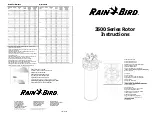
- 16 -
O
PERATOR
´
S
M
ANUAL
F
ITIS
120 M
9901.00.20EN00 - 05/2015
a
b
c
d
W
F
W
R
L
r
L
f
Legend
We Tractor dead weight
Lf Front lifting capacity of unladen tractor
Lr Rear lifting capacity of unladen tractor
:I 7RWDOZHLJKWRIWUDFWRUDQGHTXLSPHQWKLWFKHGWRIURQW
:U 7RWDOZHLJKWRIWUDFWRUDQGHTXLSPHQWKLWFKHGWRUHDU
a
Distance between centre of gravity of front-mounted implement
and the front bearing axle
b Tractor
wheelbase
c
Distance from the centre of the rear axle to the centre of the
draw bar
d
Distance between the centre of the d raw bar and the centre of
gravity of the hitched implement
[
0DQXIDFWXUHUVSHFL¿FDWLRQVIRUWUDFWRUIRUPLQLPXPUHDU
EDOODVWLQJ,IQRZHLJKWVVSHFL¿HGDSSO\DFRHI¿FLHQWRI
Formulae and calculation method
ʈ
The method of calculation of the minimum front ballast for a
tool hitched to the rear: enter the result in the table.
ʈ
Method of calculating the minimum rear ballast for a heavy
tool hitched to the front: enter the result in the table.
ʈ
'HVFULSWLRQRIORDGDFWLQJRQWKHD[OH
enter the value for the
HIIHFWLYHORDGRQWKHIURQWD[OHDQGWKHSHUPLVVLEOHZHLJKW
obtained from the tractor operator's manual.
ʈ
Calculate the total actual weight: enter enter the value for the
effective total weight and the permissible weight obtained from
the tractor operator's manual.
ʈ
&DOFXODWLQJWKHHIIHFWLYHORDGRQWKHUHDUD[OHHQWHU
the value
IRUWKHHIIHFWLYHORDGRQWKHUHDUD[OHDQGWKHSHUPLVVLEOHORDG
RQWKHUHDUD[OHREWDLQHGIURPWKHWUDFWRURSHUDWRUVPDQXDO
Actual values
Permissible
values
Values x2 the
permissible
capacity of the
tyres
Min. ballasting
Front/Rear
Kg
Total weight
Kg
Kg
Front lifting
capacity
Kg
Kg
Kg
Rear lifting
capacity
Kg
Kg
Kg
The results must be lower than or equal to the permissible
values.
4.4 Length of the lifting links
2
1
Legend
1 Raised
position
2 Lowered
position
The length of the link arms determines the vertical alignment of
the hitch and the position of the lifting cylinders while working.
ʈ
Adjust the length of the link arms so that the hitch is perfectly
horizontal for operation.
ʈ
Adjust the length of the links so that in the working position
at least 30 mm of lifting cylinder travel remains. This allows
the amplitude of the hitch height to be adjusted from the
driver's cab and the tractor's slip control device to be correctly
RSHUDWHGGUDIWFRQWURO
4.5 Position of the stabilisers
1
2
3
Legend
1 Operating
clearance
2 Pins
3 Tie
rod
When hitching a carried implement, the tie-rods or stabiliser
shims should be positioned so that:
ʈ
In the transport position, the link arms have a minimum
FOHDUDQFHFP7KLVDYRLGVDQ\ULVNRILPSDFWVEHWZHHQ
the implement and the tractor during manoeuvres and
transport,
ʈ
In the working position, the link arms have a clearance of 2 to
5 cm.
If necessary, obtain shim bushings to prevent the arms sliding
sideways on the hitching pins. Make sure that the hitching pins
DUHVXLWDEOHIRUWKHKLWFKW\SHOHQJWKDQGGLDP
















































